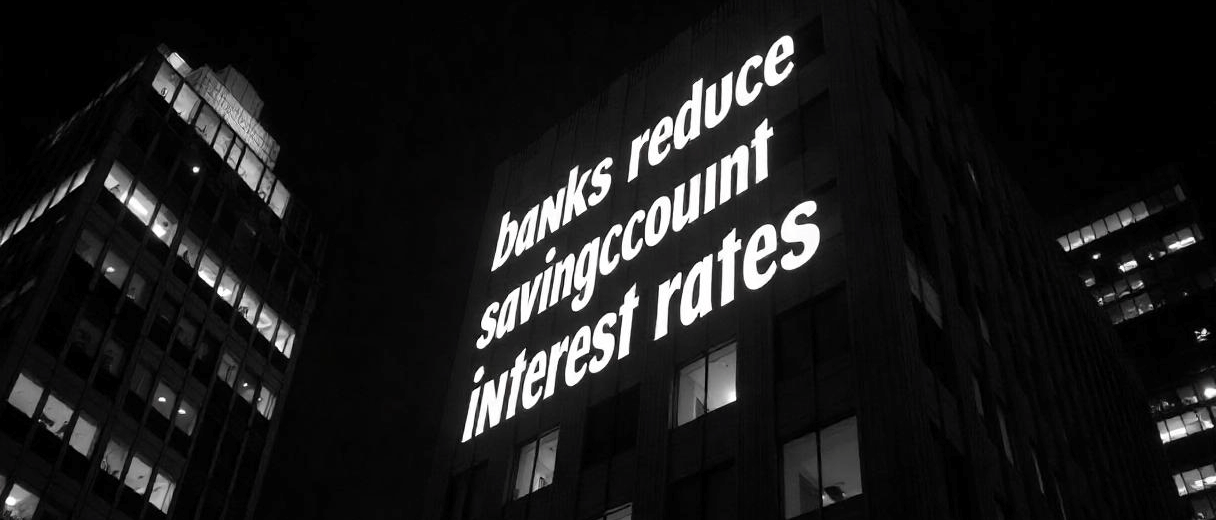Banks Reduce Savings Account Interest Rates to Safeguard Profitability Amid Margin Pressure

As economic dynamics shift and interest rate cycles evolve, Indian banks are increasingly revisiting their savings account interest rate structures. In a strategic move aimed at preserving profitability and managing Net Interest Margins (NIMs), several leading banks have begun reducing interest rates on savings deposits. This development underscores the broader efforts by the banking sector to navigate a tightening liquidity environment and rising cost structures.
Why Are Banks Slashing Savings Account Interest Rates?
- Protecting Net Interest Margins (NIMs)
Net Interest Margin is the difference between the interest income a bank earns from loans and the interest it pays to depositors. With lending rates under pressure due to competitive dynamics and a cautious credit outlook, banks are proactively adjusting their deposit rates to keep NIMs stable.
- Surplus Liquidity
Despite recent concerns over tightening liquidity, large banks still hold significant cash reserves. The abundance of low-cost deposits means banks are under less pressure to offer high savings rates to attract funds, giving them room to reduce these payouts without impacting deposit mobilization significantly.
- Shift to Retail and Term Deposits
Banks are increasingly encouraging customers to move from savings accounts to term deposits, which offer higher returns and allow for better liability management. This also helps banks lock in funds for longer durations at predictable costs.
- RBI’s Monetary Policy Stance
The Reserve Bank of India (RBI) has maintained a relatively hawkish tone, holding repo rates steady while focusing on inflation control. With no immediate rate cuts expected, banks are recalibrating deposit rates in anticipation of a prolonged period of steady policy rates.
Leading Banks That Have Slashed Savings Rates
- ICICI Bank, HDFC Bank, and Kotak Mahindra Bank have all recently announced lower savings deposit interest rates, especially for balances below ₹50 lakh.
- Many banks now offer between 2.5% and 3.5% per annum on standard savings accounts, down from highs of 4–6% seen during periods of aggressive customer acquisition strategies or higher repo rates.
Impact on Consumers
Lower Returns on Idle Cash
Customers with large idle balances in savings accounts will see lower monthly interest accruals, prompting a rethink of how they manage surplus funds.
Rise in Interest for Alternate Investment Avenues
With savings rates dropping, customers may explore:
- Fixed deposits and recurring deposits
- Mutual funds, especially debt funds
- Sovereign gold bonds and PPFs
Push Toward Digital Savings and Neo-Banks
Several neo-banks and digital banks, not burdened with high operational costs, continue to offer higher savings interest rates to attract younger, tech-savvy customers—challenging traditional players to balance innovation and profitability.
Banking Sector Outlook
While rate cuts may seem like a small move, they reflect broader financial sector priorities:
- Maintaining strong financial health
- Strategically managing liabilities
- Preparing for future credit growth cycles
As banks continue to optimize their balance sheets, depositors must become more active financial planners, leveraging digital tools and diversified investment strategies to counter the declining returns on traditional savings.
Conclusion
The reduction in savings account interest rates is not merely a tactical move—it’s part of a larger structural recalibration by Indian banks to navigate current economic realities. While this impacts depositors in the short term, it also nudges Indian consumers toward better financial literacy and active wealth management. Going forward, customers will need to be more informed, agile, and proactive in choosing where to park their funds for optimal returns.
Recent post
Take Fintegriti for a Test Drive
No License Required!
Still on the fence? Hop in and experience payments so smooth,
even your morning coffee will be jealous



